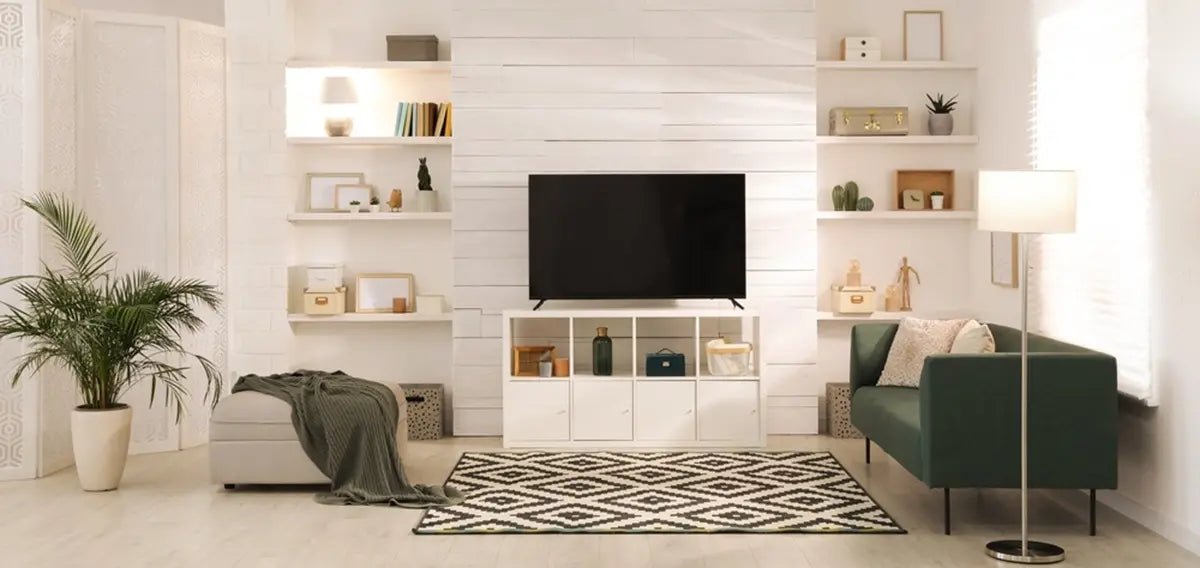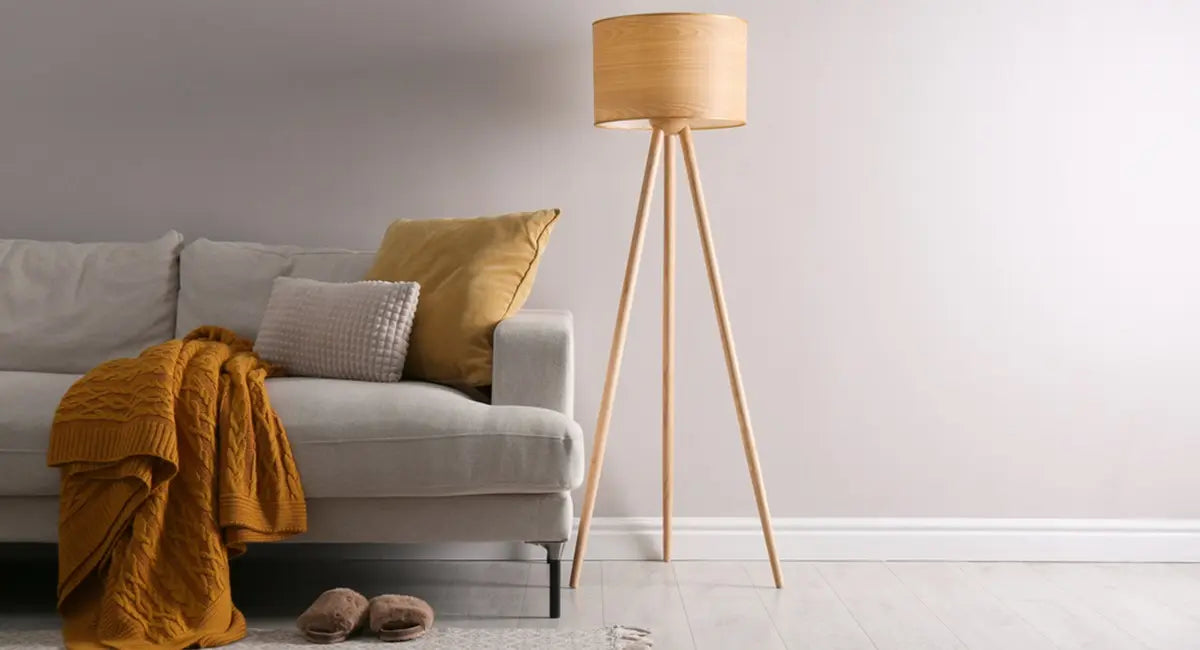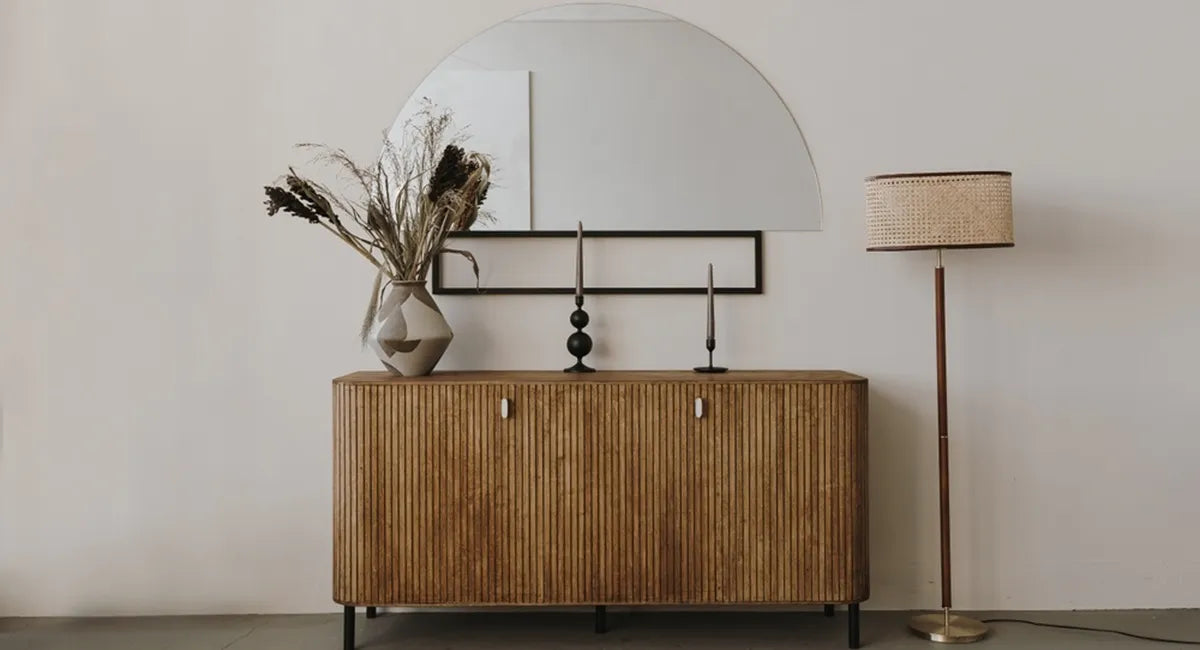Floor lamps, a staple in homes and offices, spark a lively debate: Is a Floor Lamp Considered Furniture?
We will dissect the characteristics that set floor lamps apart from traditional furniture. By examining their functionality, design, and role within our homes, we intend to shed light on this intriguing topic.
Join us as we navigate this intriguing debate.
Understanding Furniture
Furniture, as defined by Wikipedia, encompasses objects designed to support daily human activities. These activities range from seating (like stools and sofas) and eating (using tables), to sleeping (with beds and hammocks) and even storing items (through cupboards and drawers). The essence of furniture lies in its utility: providing support, facilitating work by maintaining objects at a useful height and organizing belongings.
However, furniture's role transcends mere functionality. It acts as a decorative art, reflecting design ingenuity while also bearing symbolic or religious significance. The diversity in materials—from metal and wood to plastic—coupled with the variety of woodworking joints, showcases the rich tapestry of local cultures and craftsmanship.
Furniture types are vast, covering essential areas of living and working spaces:
Seating: This category is fundamental, offering various forms for sitting, including chairs, recliners, and sofas, tailored for comfort and style.
Sleeping or Lying: Beds, hammocks, and futons fall into this category, providing restful support.
Storage: Essential for organization, this includes dressers, shelves, and cupboards.
Entertainment: Items like TV stands and bookcases that enhance leisure activities.
Why Floor Lamps Are Not Considered Furniture
Lack of Support for Human Activities
Floor lamps serve primarily to illuminate spaces. Unlike chairs, beds, or desks, they do not offer direct support for seating, eating, working, or sleeping. This critical difference sets them apart from furniture designed to directly facilitate these activities.
Absence of Storage Capability
Many furniture pieces, such as dressers and bookcases, are valued for their storage functions. Floor lamps, in contrast, lack any capacity to store or organize items. This absence highlights a fundamental utility gap between floor lamps and traditional furniture.
The Unique Functional Role of Lighting
The primary role of floor lamps is to provide light. This function serves a different purpose than furniture. Furniture can enhance the atmosphere and usability of living spaces in many ways. Floor lamps' dedicated purpose for illumination sets them apart.
Materials and Design
The materials and design process for floor lamps focuses on durability, light diffusion, and aesthetic appeal. These aspects differ significantly from furniture, which may use a broader range of materials and designs intended to support human activities and offer storage solutions. The design intent behind floor lamps prioritizes lighting efficiency over the versatility typically associated with furniture.
Floor Lamps: Classification as Light Fixtures
Floor lamps fall into the broader category of light fixtures. Unlike traditional furniture, which encompasses items designed for seating, storage, or work activities, floor lamps serve a distinct purpose. They are primarily designed to illuminate spaces, standing apart in both function and design philosophy from furniture.
Floor Lamps as a Subset of Light Fixtures
Light fixtures come in many forms, each with its unique role in lighting environments. Floor lamps, alongside table lamps, torch lamps, and gooseneck lamps, specialize in providing light.
This singular focus differentiates them from multifunctional furniture pieces, catering to various human activities and storage needs. Floor lamps' design, emphasizing portability and illumination, underscores their classification as light fixtures, not furniture.
The Implications of This Distinction
Interior Design Planning
Recognizing the distinct roles of floor lamps enhances interior design strategies. Designers are encouraged to see lighting as more than just a practical need. It can greatly change the mood and look of a room. This perspective shifts how lighting is integrated, emphasizing its role in creating ambiance alongside furniture arrangements.
Furniture Selection and Placement
Differentiating between furniture and lighting fixtures like floor lamps is crucial when planning room layouts. It ensures that lighting serves as a complementary element that enhances the functionality and appeal of furniture pieces. This distinction ensures that furniture and lighting work well together in a room, rather than competing for attention.
Explore our diverse collection of home lighting floor lamps, designed to enhance any room’s decor while fulfilling essential lighting needs.
Before you leave
Floor lamps are not considered traditional furniture because they are primarily used for lighting and have a unique design.
Curious to see how floor lamps can transform your space with just a switch? Dive deeper and enrich your experience with floor lamps. Uncover the magic they bring to any room, blending functionality with style.
Further Reading
Are Floor Lamps Still in Style in 2025? Find Out Why









Leave a comment
All comments are moderated before being published.
This site is protected by hCaptcha and the hCaptcha Privacy Policy and Terms of Service apply.